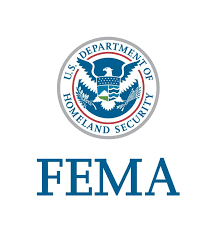Spring Runoff Could Lead to Flooding

This winter has been tough for many cities and states. Artic weather has led to record cold and snowfall in many places. Now that spring is on the way and the snow is starting to melt, the runoff could lead to flooding in many locations. If you are not protected by flood insurance, the cost to repair or rebuild your home after flood damage could fall to you.
Utah is an excellent example, according to the Commissioner of the Utah Insurance Department, the state snowpack is averaging over 130 percent more than normal and 97 percent of Utah residents are not carrying flood insurance. As the snow melts into runoff, Utah residents could find themselves in the path of floodwaters.
Flood Damage Needs Flood Insurance
A common misconception with homeowners insurance is that it covers flood damage. This is not true, almost every homeowners policy ever written excludes flood damage, which means you must carry a separate flood insurance policy to be fully protected.
While many of us think we will never suffer flood damage, it’s actually more common than you think. According to the Federal Emergency Management Agency (FEMA), flooding is the most common type of natural disaster and is often one of the most expensive issues that can hit a homeowner. Just 1 inch of water in your home can cause up to $25,000 in damage according to FEMA data.
Flood insurance will certainly help cover the cost of flooding damage but it doesn’t cover everything, including flood damage in your basement. A standard flood policy covers the following: foundation, garage, heating and cooling systems, electrical and plumbing. Drywall, carpeting, window treatments as well as your personal property, up to your coverage limits. Flood damage in the basement is always excluded from a standard flood policy.
Flood Insurance is Expensive and Comes with Limits
Flood insurance tends to be fairly pricey in the private market so many homeowners turn to the National Flood Insurance Program (NFIP) for coverage. NFIP policies tend to be more affordable than private market insurance but are still expensive. Pricing will vary depending on where your home is located, currently the average NFIP premium is $700.
While flood insurance is expensive, it is a bargain compared to repairing flood damage to your home on your own. In addition to expensive repair or rebuilding costs you would also be on the hook to replace all of your possessions.
The big issue with NFIP policies are the exclusions and coverage limits. NFIP policies come with coverage caps of $250,000 per building and $100,000 for contents so if your home and contents are worth more than this, you will need to purchase supplemental coverage in the private market.
In addition, flood insurance doesn’t offer additional living expenses coverage which means if your home is so damaged that you cannot live in it (this is common with flood damage) you will have to cover the cost of hotel rooms, restaurant meals and other day to day expenses related to not being able to live in your home.
Property located outside of the insured building is not also not covered. This includes things such as trees, wells, septic systems, decks, patios, fences, hot tubs, and even swimming pools.
Despite the exclusions and coverage limits, flood insurance can be a financial lifesaver if your home is seriously damaged or destroyed by a flood and if you are in a flood risk area, you should not be without this important coverage.
Flood Insurance Has a Waiting Period
If you are considering flood insurance, the time to purchase a policy is now. Spring runoff is coming and flood insurance has a 30-day waiting period before coverage kicks in regardless of whether you buy it in the private market or through the NFIP.
This means that if you purchase a policy today, your home will not be protected against flood damage for 30 days.
You may want to use those 30 days to put together a personal property inventory. Having a complete inventory of your personal possessions will ensure that you are paid quickly and fairly if you have to make a claim. You should record serial numbers, date purchased as well the cost of each item. If possible, take a photo or video of all of your possessions as well.
Putting together a complete personal property inventory can be a tedious task but there are many apps available that make the job easier and store the results in the cloud so you will have access to it even if your home is destroyed.
